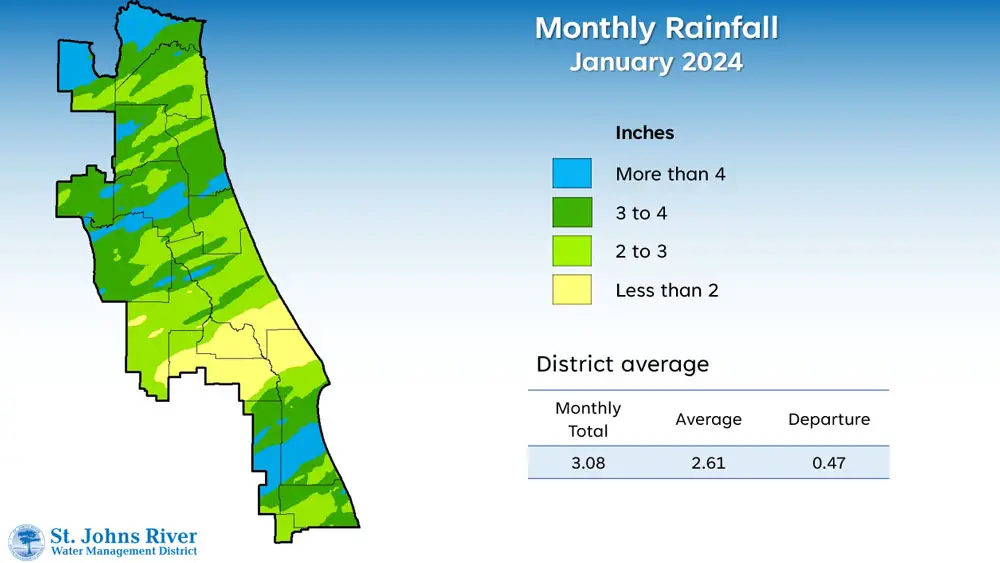
In January, the St. Johns River Water Management District region continued its trend of above-average rainfall, mainly due to frontal systems, a common occurrence during this time of the year. Out of the 18 counties that make up the District, 11 received between half an inch to an inch more rainfall than their usual monthly average. Notably, the Orlando to Daytona corridor, previously saturated in the preceding months, returned to a near-average rainfall.
A comprehensive report outlining January’s hydrologic conditions was presented at the District’s Governing Board meeting, featuring the following highlights:
Rainfall
- Districtwide, January’s rainfall averaged 3.08 inches, exceeding the monthly average by 0.47 inches.
- County-wide monthly rainfall totals ranged from a high of 4.01 inches in Alachua County, to a low of 1.65 inches in Seminole County.
- Over the past 12 months, the majority of the District has received above-average rainfall, with a cumulative total of 56.20 inches, surpassing the long-term average by 5.19 inches.
- County-wide totals varied between 49.64 inches in Lake County to 60.62 inches in Volusia County.
Groundwater
- Upper Floridan aquifer conditions were a mix of mostly high or normal range at the end of January.
- Districtwide groundwater levels, expressed as a single index, fall within the 82nd percentile, which is in the high range for this time of year.
Spring flows
- Silver Springs recorded a mean monthly flow of 748 cubic feet per second (cfs), or 484 million gallons per day (mgd), a 51 cfs increase from December, falling within the high range for this time of year.
- Blue Spring station in Volusia County reported a mean monthly flow of 159 cfs, or 103 mgd, within the normal range.
- Rock Springs experienced a slight increase in mean monthly flow, staying in the normal range at 62 cfs (40 mgd).
- Wekiwa Springs also exhibited a slight increase, recording a mean monthly flow of 66 cfs (42 mgd), consistent with the seasonal norm.
For further insights into rainfall totals and other hydrologic data, visit www.sjrwmd.com.
Visit WaterLessFlorida.com for tips to help landscapes thrive while saving water and money. Follow the water conservation conversation at #sjrwmd #waterconservation #savewater.




























Leave a Reply